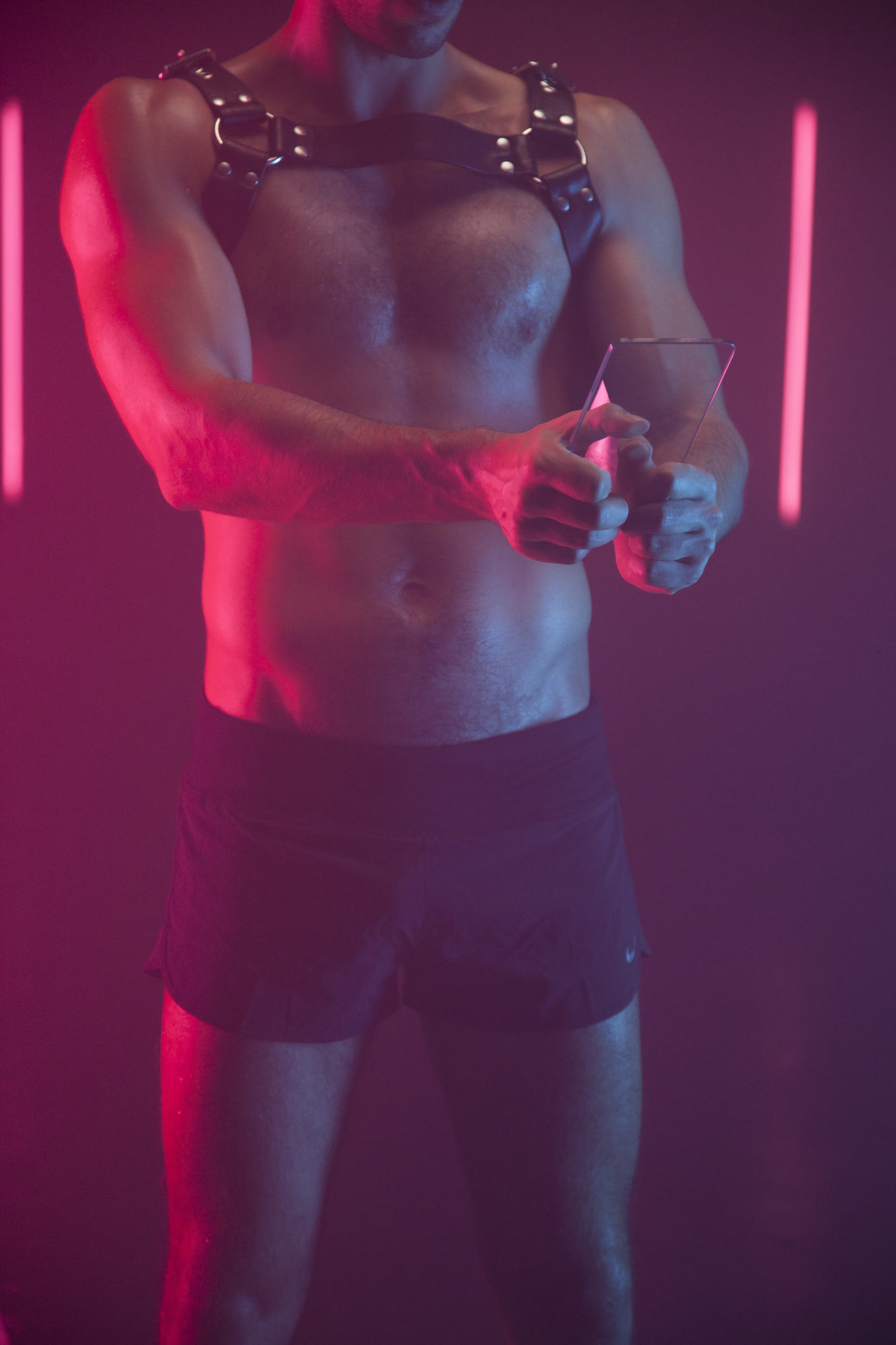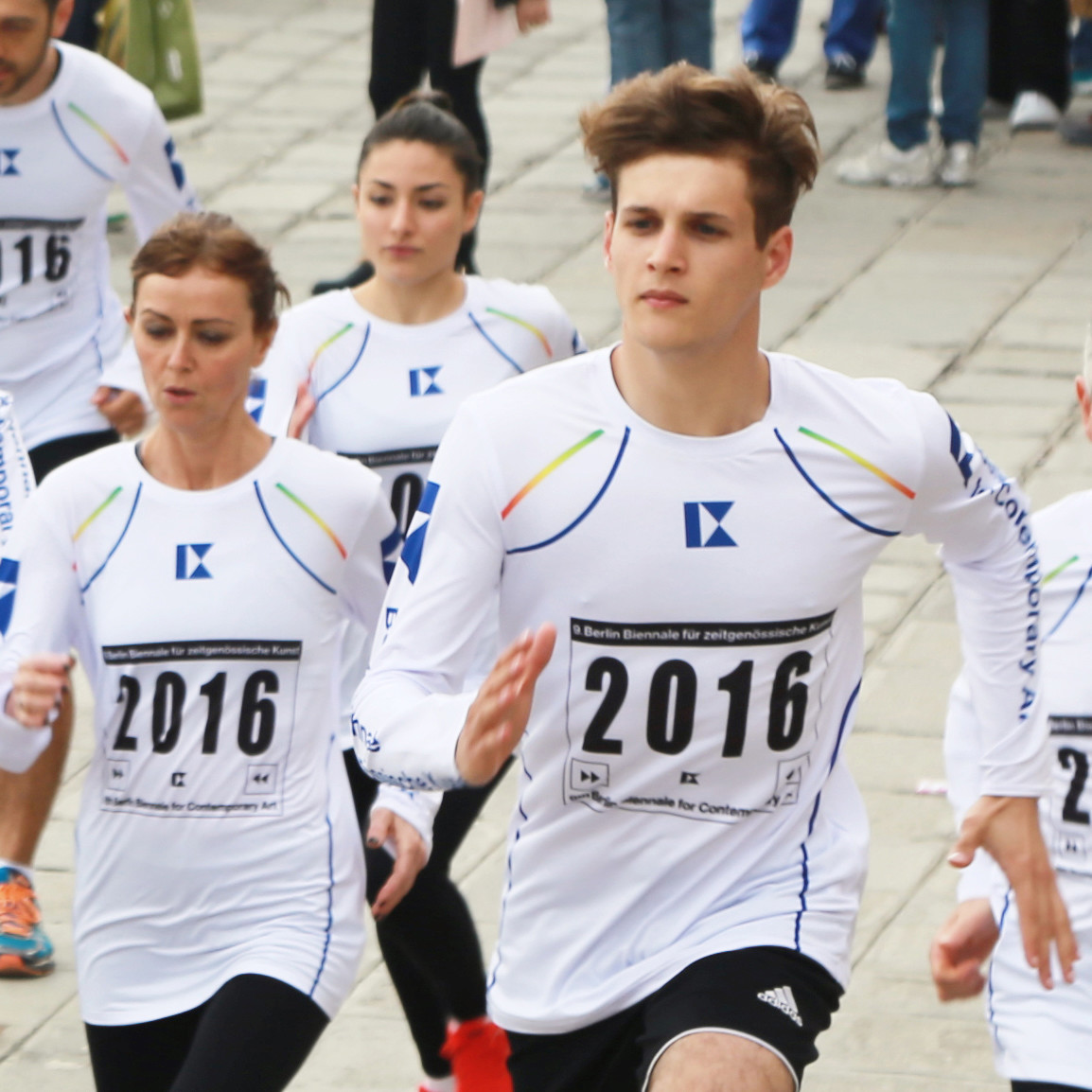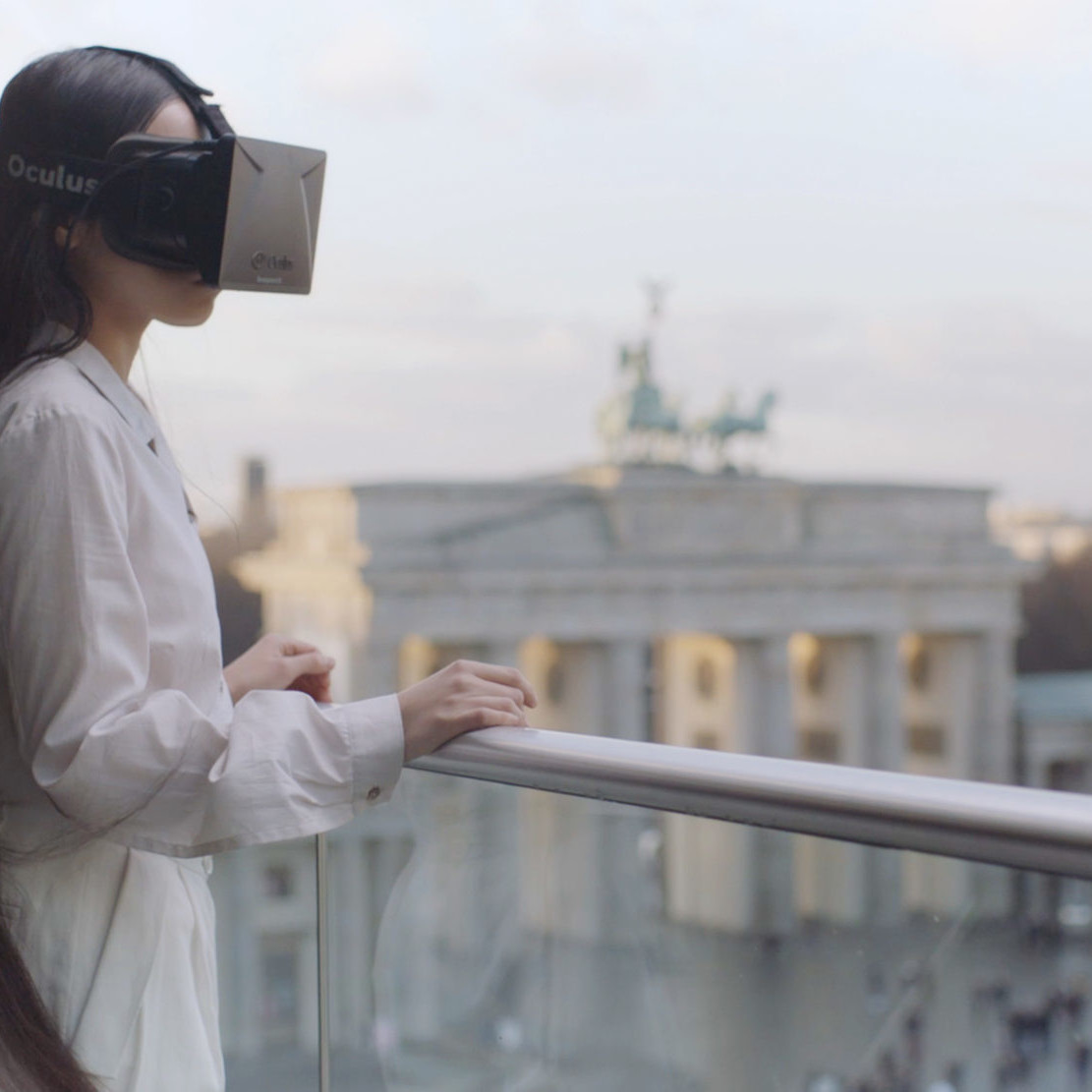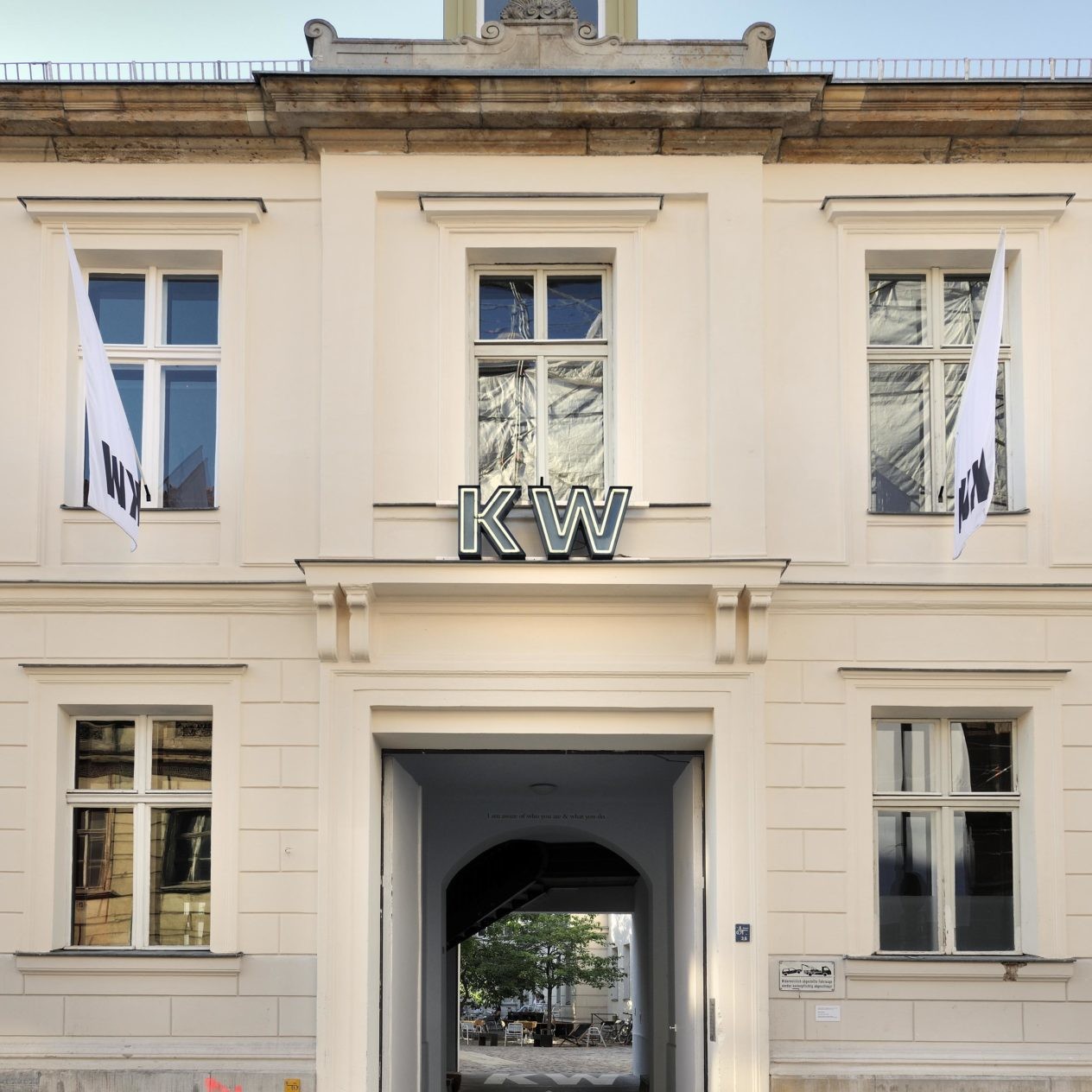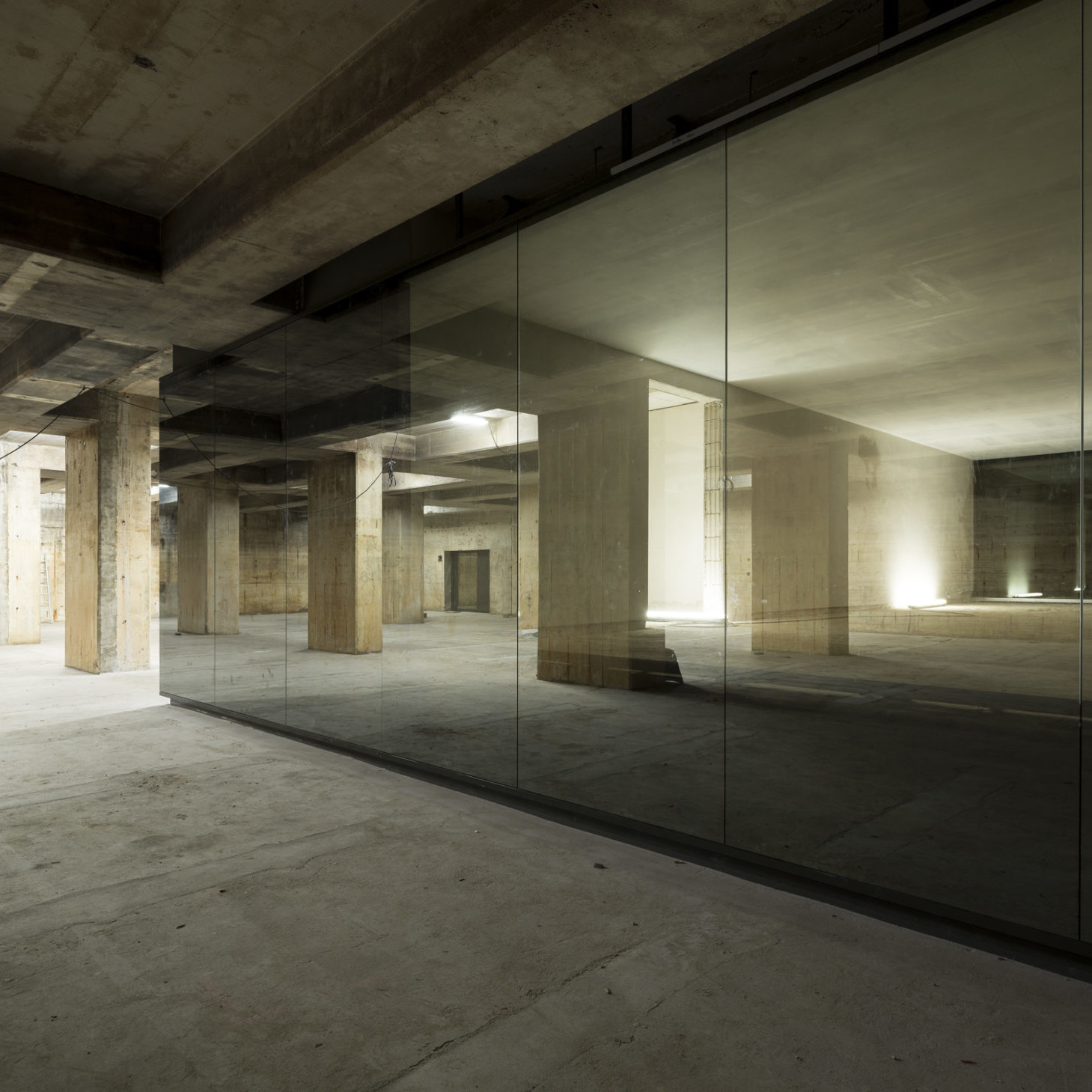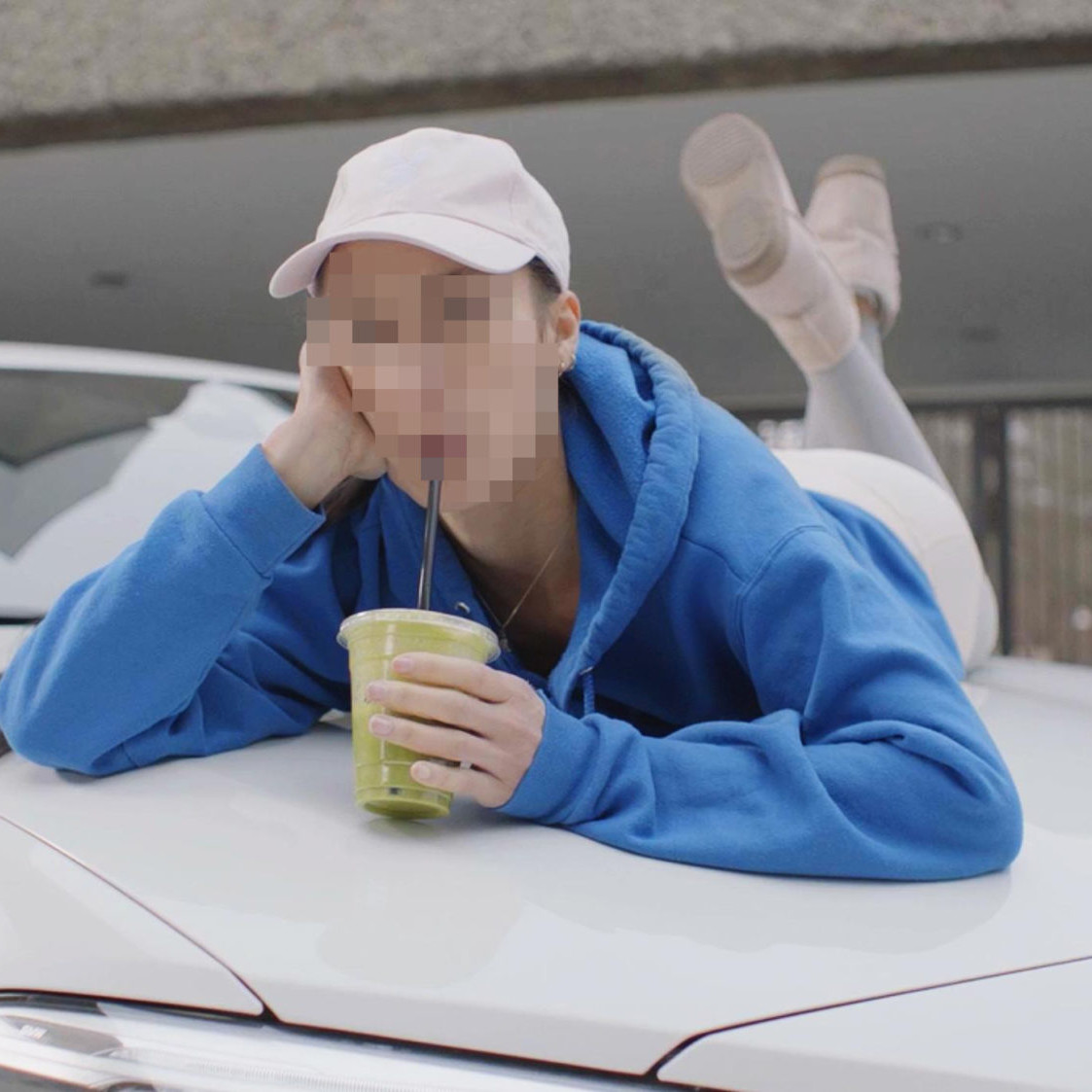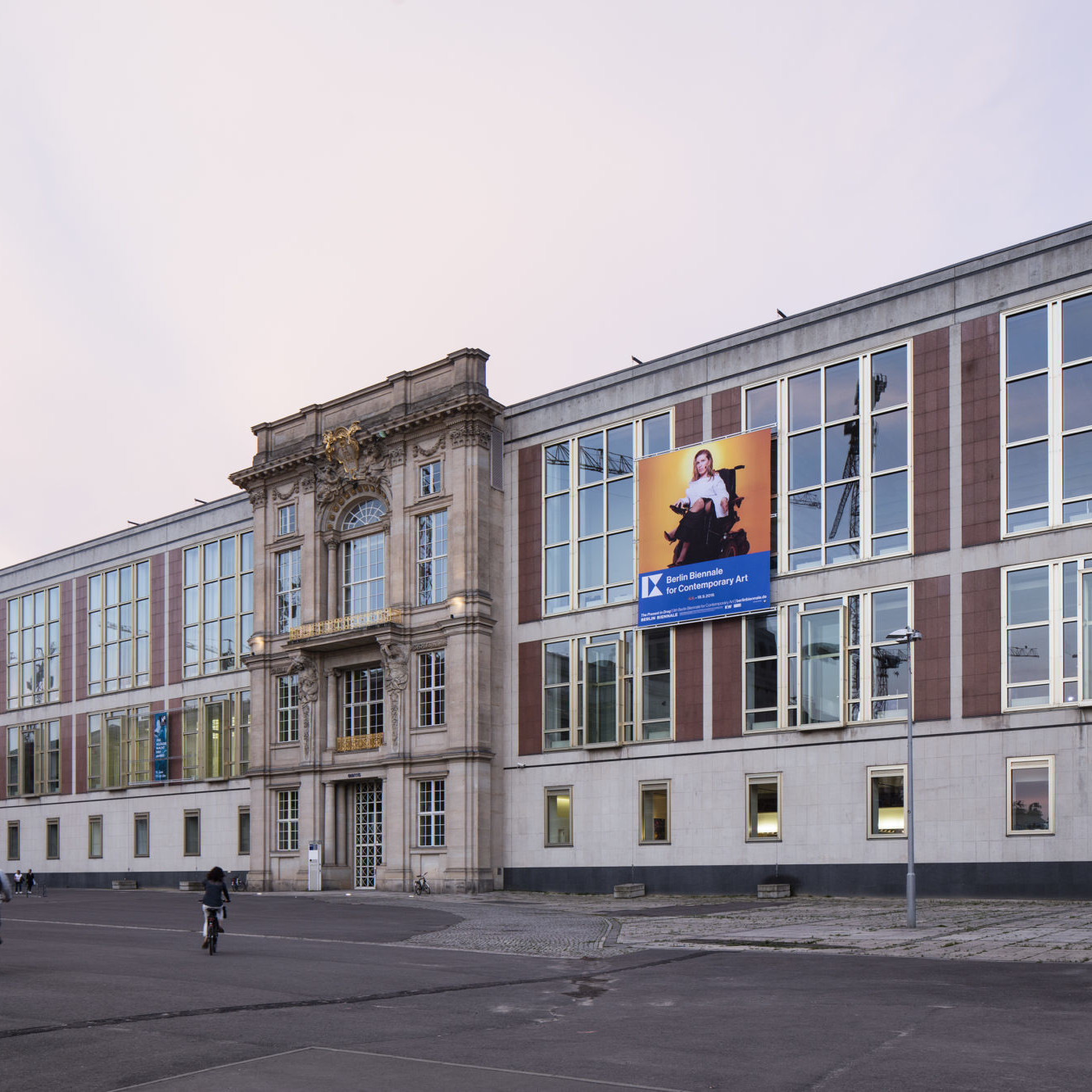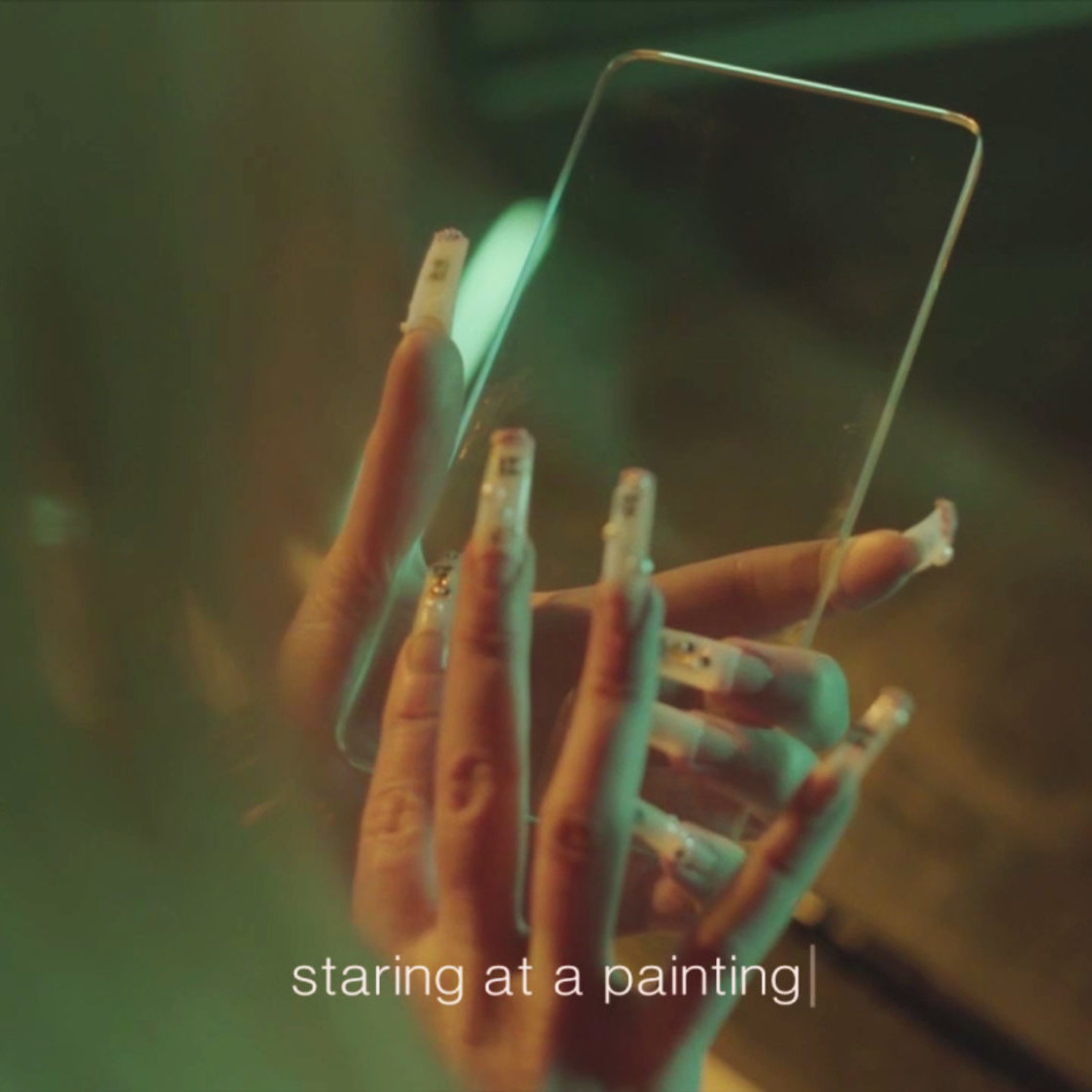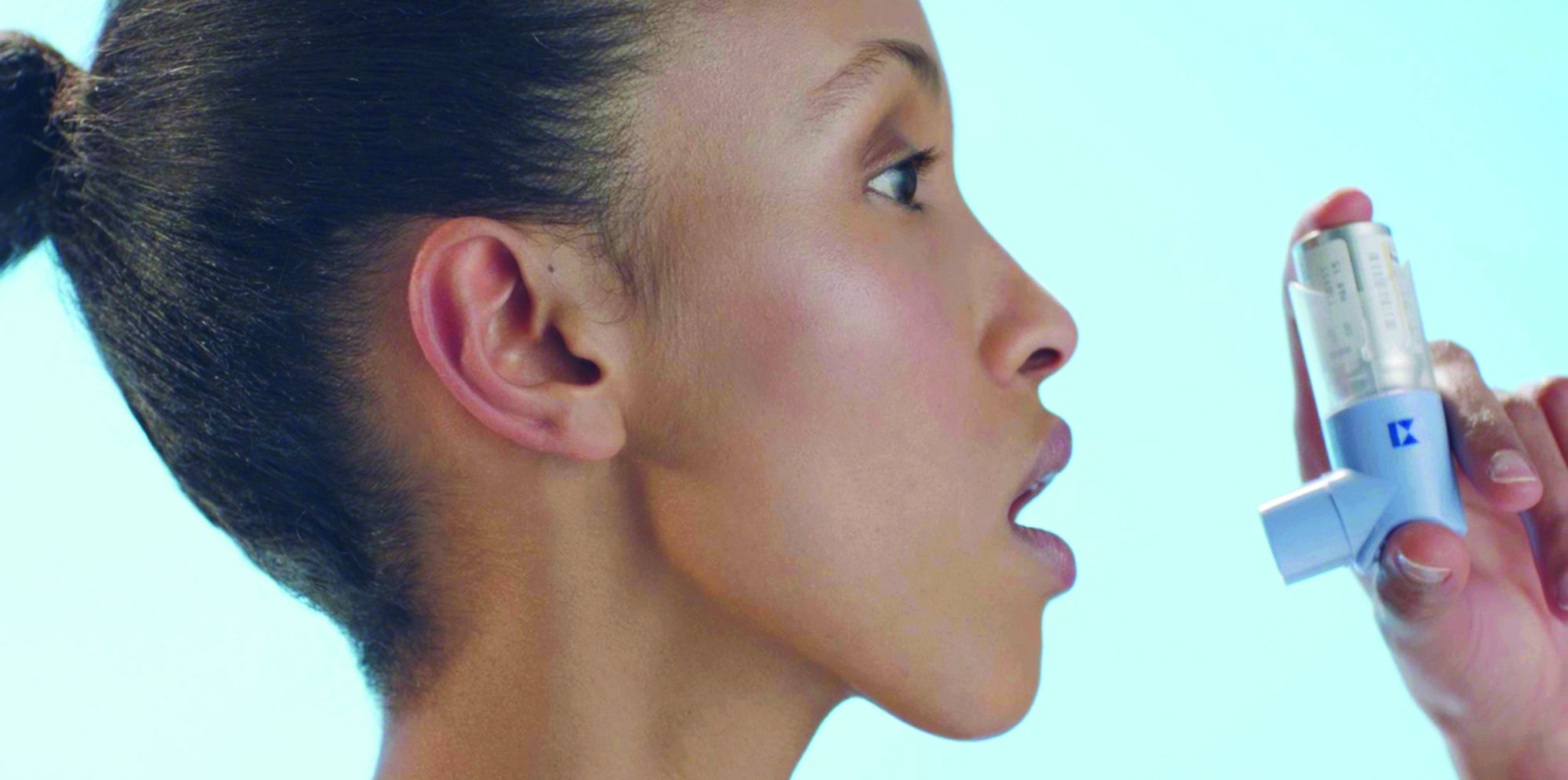
Speculative Ambience (still), 2016, produced by Iconoclast [courtesy of Berlin Biennale for Contemporary Art]
The Present in Drag
Share:
Taking place in Berlin this summer is The Present in Drag, the city’s ninth biennial (BB9), this year curated by New York’s DIS collective (Lauren Boyle, Solomon Chase, Marco Roso, and David Toro). Although the exhibition takes place in the German capital, its connection to Berlin specifically is acutely decentralized. Favored instead within the schema of the exhibition is our shared, palpably contemporary moment, as well as its accompanying feelings of tension and at times regrettable complicity with the realities of the present day, with which we are all too familiar. The exhibition’s title, with its reference to the opulent performativity of drag culture, points to a masking of an unappealing social and cultural underbelly. What the works in this show lay bare are precisely the fragility, imperfections, contradictions, and flaws of personal identity. DIS is a collective whose own aesthetic is known to be surface-centric, commercial, or almost too polished and free of defect; yet its biennial discusses the overbearing corporatization of contemporary life, as it is tethered perhaps more now than ever to larger, technological systems and capitalistic networks. This effort also discusses an inherent effect of our corporate digital age: a crippling devaluation of the body, of physicality altogether, of interpersonal relationships, of love, compassion, and pain—the realization of which reveals and intensifies a particular brand of shame and regret.
DIS is best known for its online magazine that covers all aspects of culture, contemporary art being only one relatively small part. Although its overall project is a curatorial one, the creators of DIS are artists—not curators—and their BB9 reflects the global conditions within which they operate as such. The show brings together many artists with whom DIS has worked before. Their proximity, however, feels neither “natural” nor familiar. Behind every door of the five venues of the biennial, the only predictability in the sculpture, photography, video, new media, and installation works encountered is that each one will look and behave unexpectedly. Perhaps this has to do with the fact that most of BB9 is composed of new artist commissions. Among these original works is an enchanting video installation by Belgian-American artist Cécile B. Evans called What the Heart Wants (2016); situated in the basement of the Kunst-Werke Institute for Contemporary Art (KW), the biennial’s main venue, the work’s large, central projection is surrounded on all sides by shallow pools of dark water. At first glance, What the Heart Wants appears to reflect DIS’ familiar aesthetic and conceptual framework: after an opening montage, the video presents an image of a dark-haired female avatar with a blurred, unfinished face; then, a female voice-over begins to say the slow, hypnotizing phrase: “This is a system ….” One general narrative engaged here is the familiar story that humanity is being replaced with increments of digital information, via data servers and virtual bodies. The curatorial statement accompanying The Present in Drag explicitly references this ominous, futuristic vision: in it, DIS postulates an inevitable collapse of the present into the future, fueled by society’s “persistent commitment to a set of fictions.” (Accordingly, the text also claims that “There is nothing particularly realistic about the world today.”) Of course, as Evans’ video progresses, the narrative takes on a unique intimacy: at its core, the story is about love, longing, and loss; the desolation of war, and our human need to be needed—even in future realities that cast out things we used to consider somewhat essential to our beings (such as ears, for example).
Evans’ installation steeps viewers in a cave-like space that glows with the light of bright blues and pinks; farther along, a short, sterile, brightly lit hallway brings us toward a door, behind which is an intimate but utilitarian, cement- and exposed brick-walled room, its floor piled high with chunky, gray cat litter. A single white bench, wedged into this “sand,” faces a video projection of Crying Games (2015), a work by Josh Kline that features images resembling George W. Bush, Condoleezza Rice, Dick Cheney, Donald Rumsfeld, and Tony Blair, each sobbing and wearing stereotypical prison jumpsuits. They repeat, through stammered, blubbering gasps for air, “I’m sorry … I’m so sorry … all those people …. What kind of person am I?” Their skittish, twitching faces are partially composed of real footage of actors, whose features are modified to resemble politicians’ using face modeling software. The result is a sort of warbling digital mask. These faces are hard to look at, hard to visually process and stay focused on, but the politicians’ voices sound all too real, and intensely full of heartache. Again, this flood of seemingly authentic emotion pours through works that might otherwise be understood as cold, flat products of impersonal technologies from the very corporate, governmental, and social systems they claim to critique.
Tilman Hornig, GlassPhone (still), 2016, produced by Iconoclast (courtesy of Berlin Biennale for Contemporary Art)
In stark contrast with Kline’s and Evans’ emotive works, just upstairs from the lower enclaves in which they are exhibited, is the entrance desk to the rest of the exhibition space at KW, where visitors queue to buy their tickets as video artworks-cum-advertisements play silently above their heads. These works, produced by DIS and art directed by Babak Radboy, are part of “Not in the Berlin Biennial,” a sector in the exhibition that serves as the jurisdiction for all of its original promotional and campaign imagery. Here, DIS—in a typically “DISassociative” fashion, to use the collective’s own terms—harnesses the impersonal superfice of commercial video by using uncannily friendly faces, gazing deeply into thin, clear plastic tablets.
A door to the left of the entrance desk leads into a room outfitted as a black box with curved corners—ideal spots for idle leaning, cuddling, or curling up to watch The Army of Love, a video work by Ingo Niermann and Alexa Karolinski. Shot in a Berlin spa, this work goes against the concept of “drag”—or perhaps it is the “undressing” part of the drag ritual, in which our physical, emotional, and psychological differences are laid completely bare. At a dimly lit indoor pool area, a mix of “real” people and actors engage in sexual and affectionate acts—exercises in tenderness, we are told, carried out by a proposed militia of lovers of all ages, body types, and physical abilities, formed to combat the lack of compassion, romance, sensuality, and respect in a world where love has been commodified, hijacked by a mindset of domination and violence. The video features performers using wheelchairs and other assisted-mobility devices, for example; its inclusion in BB9 thus taps into an underlying exhibition theme that deals not with the desire for a veneer of perfection, with which millennial and post-digital artists have come to be associated, but instead with notions of beauty and achievement that transcend able-bodied, commercially accepted norms.
The seemingly emotionally driven works exhibited within the KW, which is located in the increasingly family-chic neighborhood of Berlin-Mitte, find counterpoints at the Akademie der Künste in Pariser Platz, another major Biennale venue, where artists explore an expanded field of digital and consumer/prosumer culture, branding and marketing lingo, virtual and augmented reality, gaming, product design, and tourism. This site houses both the French and American embassies, and it is a hub of sorts in Berlin’s “government district”; the work on view here appropriately looks to the political and corporate systems in play, and the cultural and communicative strategies that emerge to create and maintain autonomy within them. Exhibited works span several disciplines and come from artists such as Simon Fujiwara, Christopher Kulendran Thomas, and Trevor Paglen—who collaborated with security researcher Jacob Appelbaum to create Autonomy Cube (2015), a usable sculpture that turns the room in which it is installed into a secure wireless hotspot where visitors can surf anonymously. The relatively didactic works on view at the Pariser Platz venue engage the Biennale’s drag theme in that they interrogate the outward-facing scaffolds of global consumer life, which appear personal and relatable to individuals, even though they are not. This portion of the exhibition includes work by Anna Uddenburg, whose Journey of Self Discovery (2016)—a sculpture of a female figure using a selfie stick to photograph her thong-clad rear end—may have been the most photographed and reposted work in the show. It was not the only one of Uddenberg’s twisted and corporeally self-reflexive sculptures on view, however; across the board, her work engages what the exhibition text calls the “feedback loop of consumer culture,” and the body politics and performance it inspires. Jon Rafman’s View of Pariser Platz (2016) created a virtual reality Oculus Rift mind-fuck on a terrace overlooking the square below; the work was accompanied by his L’Avalée des Avalés (2016), a set of colorful sculptures of animals swallowing one another—a somewhat direct depiction of consumption. In two adjoining curtained rooms nearby were installations combining video and interior decor by Ryan Trecartin and Lizzie Fitch, which, per the duo’s usual M.O., confuse viewers by sucking them into an alien word that nonetheless feels superimposed on the familiar—not unlike the effects of Oculus Rift.
Unlike so many biennials, The Present in Drag does not tell a critical theoretical or moralizing story about what has been happening lately in contemporary art, culture, or politics. It is not quite a (cautionary) tale of what is to come, either—its stance is more experiential, more personal than that. Instead, BB9 positions itself squarely within the hypocritical, dichromatic, and blurred reality that is the predicament of our current moment. Cultural production today, the biennial asserts, forces us to confront the fact that most of our perceived problems might be at least partially resolved by relinquishing the hand-held devices and various technologies that have come to fuel the streamlined and imbricated ways in which the privileged live and work. It is also suggestive of the more fundamental social problems, currently dressed up by these devices and their platforms, we might see if we were to peel back their technological, consumable disguise. What other reviewers have questioned is whether the works exhibited, and their presentation, are effective enough to convey this concern—that is, to problematize the cycles and corruptions of capital and information from which they take their cues. A related issue, too, is that entering DIS’ environment in Berlin without prior knowledge of the collective’s work—its dissimulating humor and sensibilities—might pose a challenge. We have seen this in DIS’ exhibitions before: the title of its 2014 exhibition was DISOwn—Not For Everyone. There are certainly ways to curate a show that will be pleasing to “most,” but DIS has intentionally created an exhibition that speaks to and about the collective’s peers. In doing so, though, The Present in Drag successfully calls out the capitalist corruptions of the environment we all inhabit, particularly these corruptions’ iterations in contemporary art, critical theory, and academia. In Berlin, the viewers (de facto members of this expanded peer group) are forced to acknowledge their complicity with the very problems and hypocrisies they might claim to abhor—ideally, to better address them.
